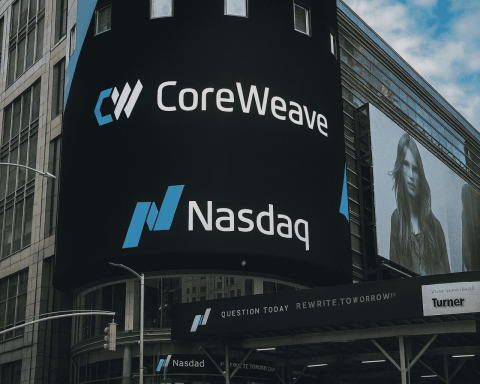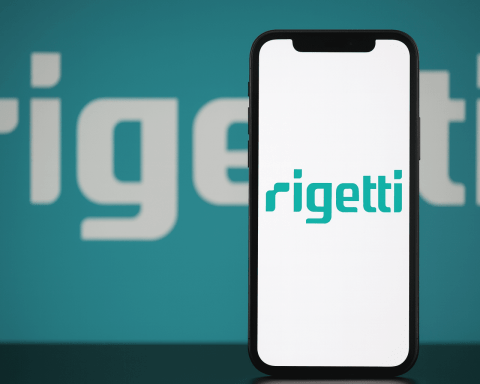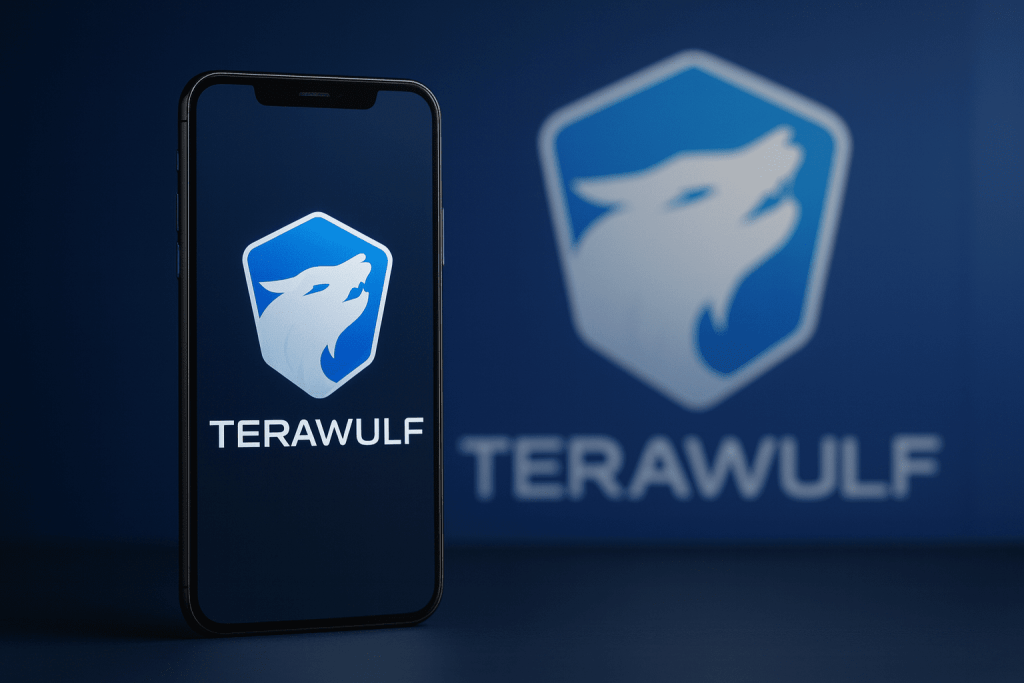Published November 21, 2025
AT&T Inc. (NYSE: T) shares climbed again on Friday, closing at $25.93, up about 1.6% for the day on heavier‑than‑usual trading volume. That marks AT&T’s second straight daily gain and leaves the telecom giant roughly 13% below its 52‑week high of $29.79 set in mid‑September. [1]
Even after recent volatility, T stock is up close to 19% year‑to‑date on a total‑return basis, handily beating its own longer‑term record and outpacing many peers in the telecom space. [2] At today’s close, AT&T also continues to offer a dividend yield in the low‑4% range, a key reason income investors keep the stock on their radar. [3]
Below is a deep dive into T stock’s move today, the latest 5G and fiber catalysts, earnings trends, dividend profile, and valuation to help investors understand what’s driving the narrative around AT&T right now.
T Stock Today: Price Action and Market Context
On Friday, November 21, 2025, AT&T:
- Closed: $25.93
- Intraday range: $25.16 – $26.18
- Previous close: about $25.52
- Daily gain: ~+1.6%
- Volume: roughly 57–59 million shares, versus a 50‑day average a bit above 51 million
The move came on a broadly positive day for U.S. equities, with both the S&P 500 and Dow Jones Industrial Average logging gains of around 1%. [5] In media and communications, AT&T’s advance outpaced Netflix, which slipped on the day, while roughly matching or modestly trailing gains in Disney and Comcast. [6]
From a performance standpoint:
- Distance from 52‑week high: about ‑13% at today’s close
- 12‑month total return: high‑teens percentage (including dividends) [7]
That combination—well off the yearly high yet still up strongly year‑to‑date—captures the core T‑stock story: a recovery from past underperformance, but not an all‑time‑high euphoria.
Fresh Catalysts: Institutional Buying, 5G Spectrum and Fiber Expansion
Quiet but notable institutional interest
Regulatory filings aggregated by MarketBeat and similar services show that institutional investors such as Willis Investment Counsel, Prudential plc, and DNB Asset Management have disclosed new or increased positions in AT&T, with those headlines hitting wires today. [8]
While individual filings don’t guarantee future performance, seeing multiple institutions adding exposure tends to reinforce the idea that large, long‑term investors are comfortable with AT&T’s current valuation, balance sheet progress and dividend profile.
$23 billion EchoStar spectrum deal starts to show up in the network
One of AT&T’s biggest strategic moves this year is its $23 billion agreement to acquire roughly 50 MHz of nationwide low‑ and mid‑band spectrum from EchoStar (about 30 MHz at 3.45 GHz mid‑band and 20 MHz at 600 MHz low‑band). [9] The transaction is expected to close in the first half of 2026, pending regulatory approval. [10]
Crucially, AT&T is already deploying a large chunk of that spectrum under a leasing arrangement:
- Mid‑band spectrum from the EchoStar deal has been rolled out to nearly 23,000 cell sites.
- Coverage extends across more than 5,300 cities in 48 states.
- AT&T says this can boost 5G download speeds by up to 80% in many markets. [11]
For T stock, this matters because it reinforces the thesis that AT&T is investing heavily in performance‑critical spectrum rather than chasing media assets—a key shift from prior strategy cycles.
Lumen fiber acquisition adds more home broadband firepower
AT&T has also signed a $5.75 billion cash deal to buy Lumen Technologies’ consumer fiber business, adding about 1 million fiber customers and expanding its footprint in major metros including Denver, Las Vegas, Minneapolis–St. Paul, Orlando, Phoenix, Portland, Salt Lake City, and Seattle. [12]
The transaction is projected to close in the first half of 2026 and should:
- Deepen AT&T’s presence in fast‑growing urban markets
- Complement its existing in‑region fiber build‑out
- Support its goal of reaching 50+ million fiber locations by 2029, when including third‑party and acquired assets [13]
For investors, pairing the Lumen consumer fiber deal with the EchoStar spectrum purchase paints a clear picture: AT&T is betting heavily on a converged 5G + fiber strategy, where it can bundle mobile and home broadband on infrastructure it largely controls.
Earnings Snapshot: Q3 2025 Shows Cash‑Flow Strength
AT&T’s third‑quarter 2025 results, released on October 22, set much of the backdrop for how investors are viewing T stock today. [14]
Key consolidated metrics for Q3 2025:
- Revenue: $30.7 billion, up 1.6% year‑over‑year [15]
- Net income: $9.7 billion (helped by a ~$5.5 billion gain from selling the remaining 70% stake in DirecTV) [16]
- Adjusted EPS:$0.54, flat versus the prior year and roughly in line with expectations [17]
- Free cash flow (FCF):$4.9 billion, up from $4.6 billion a year earlier [18]
- Capital investment: about $5.3 billion for the quarter [19]
Operationally, AT&T continued to lean on its core connectivity engines:
- Postpaid phone net adds:405,000, ahead of Wall Street expectations [20]
- AT&T Fiber net adds:~288,000 customers [21]
Debt and leverage: trending better, but not trivial
AT&T’s financial pivot over the past few years has centered on reducing debt while still funding heavy 5G and fiber investment.
As of Q3 2025:
- Total debt: about $139.5 billion
- Net debt (after cash): about $118.8 billion [22]
- Net debt‑to‑adjusted EBITDA:2.59×, down from 2.64× in Q2 and well below the levels seen several years ago [23]
Management has repeatedly emphasized a target leverage ratio around 2.5×, and Q3 results show progress toward maintaining that range. [24]
That said, analysts expect the EchoStar spectrum and Lumen fiber deals to push leverage temporarily closer to 3× once those transactions close, before trending back down over several years via free‑cash‑flow generation and potential asset sales. [25]
Guidance: FCF still the linchpin
On the Q3 call and in related commentary, AT&T reaffirmed full‑year 2025 guidance, including: [26]
- Adjusted EPS: roughly $1.97–$2.07
- Free cash flow:“low‑to‑mid $16 billion”, implying roughly $4 billion or more in Q4 FCF
- Continued modest service‑revenue growth in mobility and mid‑teens growth in consumer fiber broadband
So far in 2025, AT&T has been generating enough cash to fund its dividend, buy back stock and still chip away at net debt. Through Q3, the company had returned about $8.6 billion to shareholders via dividends and repurchases. [27]
Dividend: 4%+ Yield, Conservative Payout
Steady quarterly dividend
AT&T continues to pay a quarterly dividend of $0.2775 per share, a level that has held steady since the WarnerMedia spinoff reset the payout in 2022. [28]
Key 2025 dividend details:
- Quarterly amount: $0.2775
- Annualized dividend: $1.11 per share
- Recent ex‑dividend date: October 10, 2025
- Most recent payment date: November 3, 2025 [29]
At today’s closing price around $25.93, that works out to a dividend yield of roughly 4.3%–4.4%. [30]
Coverage looks much healthier than in the past
Importantly for income‑focused investors, AT&T’s dividend is now much better covered than it was under the old media‑heavy structure:
- Dividend payout ratio (earnings basis): ~36% of trailing 12‑month EPS [31]
- FCF payout ratio: roughly 40%–43%, based on year‑to‑date operating free cash flow figures and the 2025 declared dividends [32]
In Q3 alone, AT&T generated $4.9 billion in free cash flow against a quarterly dividend bill of around $2 billion, implying an FCF coverage ratio of about 2.4×. [33]
This aligns with the company’s longer‑term target of devoting roughly 40% of free cash flow to dividends, leaving substantial room for debt reduction, spectrum purchases, fiber builds and buybacks. [34]
$40+ billion capital‑return plan
At its 2024 analyst day and in subsequent updates, AT&T outlined a plan to return more than $40 billion to shareholders between 2025 and 2027, split roughly half dividends and half share repurchases. [35]
So far in 2025, that plan is well under way, with billions already deployed to buy back stock while holding the dividend flat at $1.11 per share.
Valuation Check: Is T Stock Cheap?
From a valuation standpoint, AT&T currently screens as inexpensive by several traditional metrics.
Earnings and cash‑flow multiples
Recent third‑party data place AT&T at roughly: [36]
- Price‑to‑earnings (P/E): ~8× based on recent EPS around $3.08
- Price‑to‑free‑cash‑flow (P/FCF): ≈ 9×, using trailing FCF per share of ~$2.77
- Implied FCF yield: roughly 11% (the inverse of the P/FCF ratio)
Those figures are well below AT&T’s own recent average P/E in the mid‑teens and significantly lower than the broader U.S. equity market, which generally trades at a low‑double‑digit to high‑teens earnings multiple depending on the index. [37]
Dividend yield vs. telecom peers
Aggregated dividend data suggest: [38]
- AT&T dividend yield: ~4.3%–4.4% today
- Communication services sector average yield: around 4.1%
- Sector payout ratio: roughly 50%+, versus AT&T’s sub‑40% payout
That leaves AT&T offering a slightly higher yield with a meaningfully lower payout ratio than many peers—a combination dividend investors typically like to see.
What Wall Street is modeling
Across major analyst surveys and data aggregators, the current picture looks roughly like this: [39]
- Consensus 12‑month price target: about $30–$31 per share
- Implied upside vs. today’s close: roughly 18%–20% on price alone
- Consensus rating: generally “Buy” or “Strong Buy”, though some services list a more cautious stance
Of course, price targets are not guarantees, but they do summarize the Street’s view that T stock remains undervalued relative to its earnings, cash flow and asset base.
Key Risks for T Stock Investors
Despite the more upbeat narrative around AT&T in 2025, T stock is not risk‑free. Key issues to watch:
- Leverage and big‑ticket deals
- The EchoStar spectrum and Lumen fiber transactions together represent nearly $29 billion in planned spending. [40]
- Management expects leverage to drift toward 3× EBITDA as these deals close before trending back to their 2.5× target. [41]
- Any slowdown in free cash flow—or higher‑than‑expected integration costs—could pressure credit ratings or limit flexibility.
- Regulatory and political scrutiny
- Large spectrum sales have drawn close attention from the FCC and the White House, with prior investigations pushing EchoStar to monetize idle spectrum, partly via the AT&T deal. [42]
- Fiber acquisitions and network‑sharing arrangements could also see evolving oversight as regulators push for competition and rural coverage.
- Intense wireless and broadband competition
- T‑Mobile continues to post strong subscriber growth and robust guidance, while Verizon remains aggressive in 5G and fixed‑wireless home internet. [43]
- Price wars or promotional battles could weigh on average revenue per user (ARPU) and margins in both wireless and broadband.
- Execution risk in convergence strategy
- AT&T’s long‑term thesis hinges on bundling mobile and fiber at scale. If churn rises, fiber uptake slows, or integration of the Lumen assets goes poorly, the expected synergies may not fully materialize. [44]
- Macro and rate sensitivity
- With over $100 billion in net debt, AT&T is naturally sensitive to interest‑rate trends and credit markets. A persistently high‑rate environment could raise refinancing costs over time. [45]
What Today’s Move Means for AT&T Shareholders
Putting it all together, today’s 1.6% gain in T stock is less about a single headline and more about the market continuing to price in a multi‑year turnaround story:
- Near‑term:
- Medium‑term:
- The EchoStar spectrum deployment is already improving 5G capacity, while the Lumen fiber acquisition, if approved and integrated well, could extend AT&T’s fixed‑broadband lead in key markets. [48]
- A planned $40+ billion in capital returns through 2027 (dividends plus buybacks) signals management’s confidence in sustained free cash flow. [49]
- Valuation:
- Single‑digit earnings and low‑double‑digit free‑cash‑flow multiples, combined with a mid‑4% dividend yield, position AT&T as a classic value‑and‑income play in a market where many growth names remain more richly valued. [50]
For income‑oriented investors comfortable with telecom‑sector risks—high capex, heavy regulation, and tough competition—T stock’s setup today looks like steady, cash‑flow‑backed yield with moderate upside potential, assuming management executes on 5G/fiber expansion and capital‑return promises.
For more growth‑focused or risk‑averse investors, the large absolute debt load and ongoing need for massive network investment may still be reasons to approach with caution or size positions conservatively.
Reminder: This article is for information and education only and is not personal investment advice. Consider your own financial situation or consult a licensed professional before making investment decisions.
References
1. www.marketwatch.com, 2. www.financecharts.com, 3. www.investing.com, 4. www.marketwatch.com, 5. www.marketwatch.com, 6. www.marketwatch.com, 7. www.financecharts.com, 8. www.marketbeat.com, 9. about.att.com, 10. www.reuters.com, 11. about.att.com, 12. www.reuters.com, 13. apnews.com, 14. investors.att.com, 15. www.wsj.com, 16. www.wsj.com, 17. finance.yahoo.com, 18. investors.att.com, 19. investors.att.com, 20. www.wsj.com, 21. investors.att.com, 22. investors.att.com, 23. investors.att.com, 24. about.att.com, 25. www.rcrwireless.com, 26. www.wsj.com, 27. investors.att.com, 28. investors.att.com, 29. about.att.com, 30. www.investing.com, 31. www.financecharts.com, 32. seekingalpha.com, 33. investors.att.com, 34. www.simplysafedividends.com, 35. about.att.com, 36. fullratio.com, 37. fullratio.com, 38. fullratio.com, 39. www.marketbeat.com, 40. about.att.com, 41. www.rcrwireless.com, 42. www.reuters.com, 43. www.marketwatch.com, 44. www.investors.com, 45. investors.att.com, 46. www.wsj.com, 47. www.financecharts.com, 48. about.att.com, 49. www.investopedia.com, 50. fullratio.com







